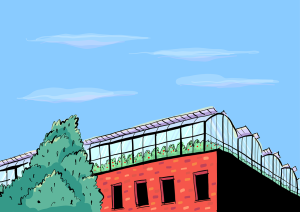
Places
Farming the Greenbelt: five farms to visit in Ottawa
Celebrating urban agriculture in Canada’s national capital region
- 1410 words
- 6 minutes
This article is over 5 years old and may contain outdated information.
Science & Tech

Last fall, I walked my six-year-old daughter home from school for the first time. She’d been enrolled there for more than two years at that point, but she attends a French immersion school far outside our neighbourhood in Calgary, so we’ve always made the commute by car.
I tried my best to make a game of it. We stopped for pain au chocolat early in the walk, and I was more patient than usual as she scaled retaining walls to balance-beam her way along their tops. We saw things we’d never noticed before: a small pocket park with swings, a Serbian church, a Cretan cultural centre. Still, the inevitable six-year-old’s refrain — “How much longer?” — began 33 minutes into the walk, recurring at tighter intervals until she was on the verge of exasperated tears, at which point I called a halt to the hike and we sought shelter in a used bookstore to wait for my wife to pick us up with the car. We’d been walking for 56 minutes and were barely halfway home. If my daughter were obliged to walk, we would have to switch schools.
Our experimental walk was one of many I took last fall. I was testing out the dimensions of my world on foot, checking to see what was not only pedestrian-friendly in design but also walkable in scale. I’d recently come to understand that the duration of a commute — not its nature or its distance — is the crucial factor, and I wondered how far my feet could take me in the contemporary urban landscape. The short answer, more often than not, was not far enough. But I’d become obsessed with the work of an Italian physicist named Cesare Marchetti, and it drove me to keep walking anyway.
Learn more about Marchetti’s Constant, which holds that the mean amount of time people all over the world spend in everyday transit is about an hour, and what that means for societies accustomed to commuting on wheels, pick up a copy of the July/August 2012 issue.


Are you passionate about Canadian geography?
You can support Canadian Geographic in 3 ways:

Places
Celebrating urban agriculture in Canada’s national capital region

Environment
Already gaining steam before the pandemic, interest in urban farming — and hunger for hyper-local food — has soared. A look at three Canadian takes on the urban farming phenomenon

Environment
Struggle and success in Atlantic Canada, where aquaculturists strive to overcome climate change and contamination while chasing a sustainable carbon footprint

Wildlife
Salmon runs are failing and grizzlies seem to be on the move in the islands between mainland B.C. and northern Vancouver Island. What’s going on in the Broughton Archipelago?